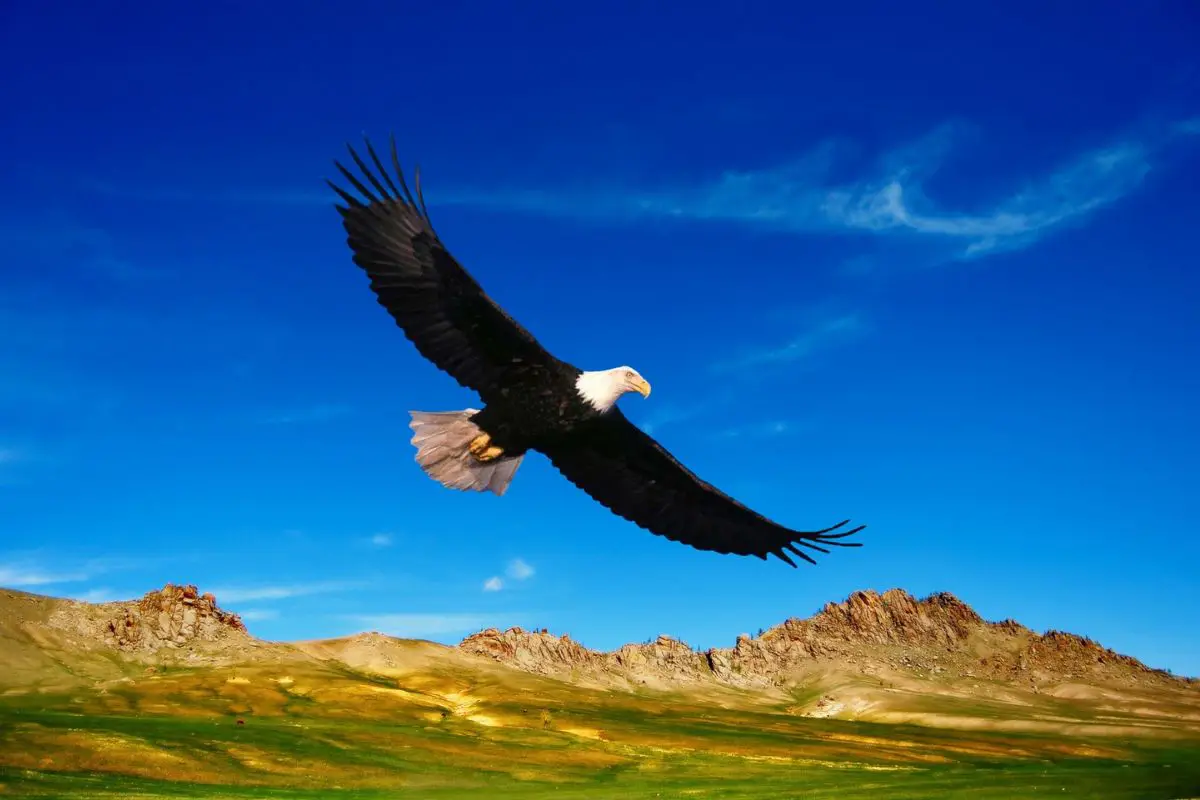
When you think of eagles, you likely imagine a patriotic bird with a white, feathery head standing in front of the American flag. But the bald eagle isn’t the only eagle out there. There are over 60 species of eagles on earth, and this massive bird of prey lives throughout areas in Europe, Asia, and North America.
These legendary birds are some of the largest birds of prey on planet earth, with large, curved talons and sharp nails to grab their prey. Eagles eat almost any animal, from small mammals and other birds to large land animals, and have an impressive wingspan of 5.9 to 8 feet or more. Most eagles live to be approximately 14 to 35 years old in the wild.
They can weigh from 6 pounds to as much as 20 pounds. So, what are some other birds like eagles? Let’s swoop in and take a closer look.
1. Red-Tailed Hawk: A Fascinating, Red-Toned Raptor
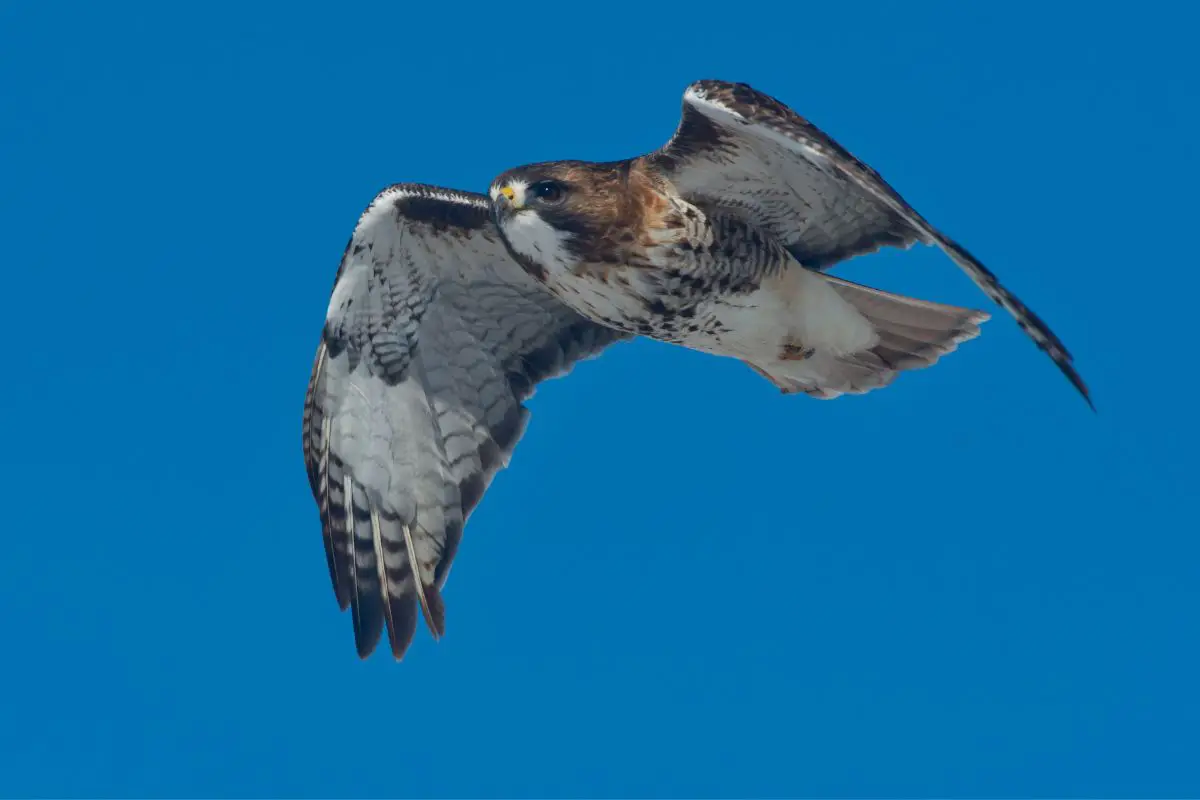
Red-tailed hawks are one of the largest birds of prey in North America. These majestic birds have extremely sharp eyesight and prey on small reptiles like lizards and snakes, as well as small birds, mammals, and rodents. The red-tailed hawk weighs just 2.4 pounds when it reaches adulthood and has an average lifespan of 10-15 years and the wild and even longer in captivity.
Most red-tailed hawks measure between 18 and 26 inches in length, and they let out a piercing screech to call their mates or signal that they’re about to grab a meal. The red-tailed hawk is similar to eagles in that it’s a formidable bird of prey. However, this beautiful bird is mostly confined to North America and is much smaller than its patriotic counterpart.
Look up, and you just might spot this reddish-colored bird in areas like Mexico, Florida, or Alaska. There’s even a species called the Jamaican red-tailed hawk, so be on the lookout for this amazing bird if you’re anywhere near the region. These birds migrate and move down to the southern part of North America during late fall and early spring.
2. Turkey Vultures: Nature’s Cleanup Crew
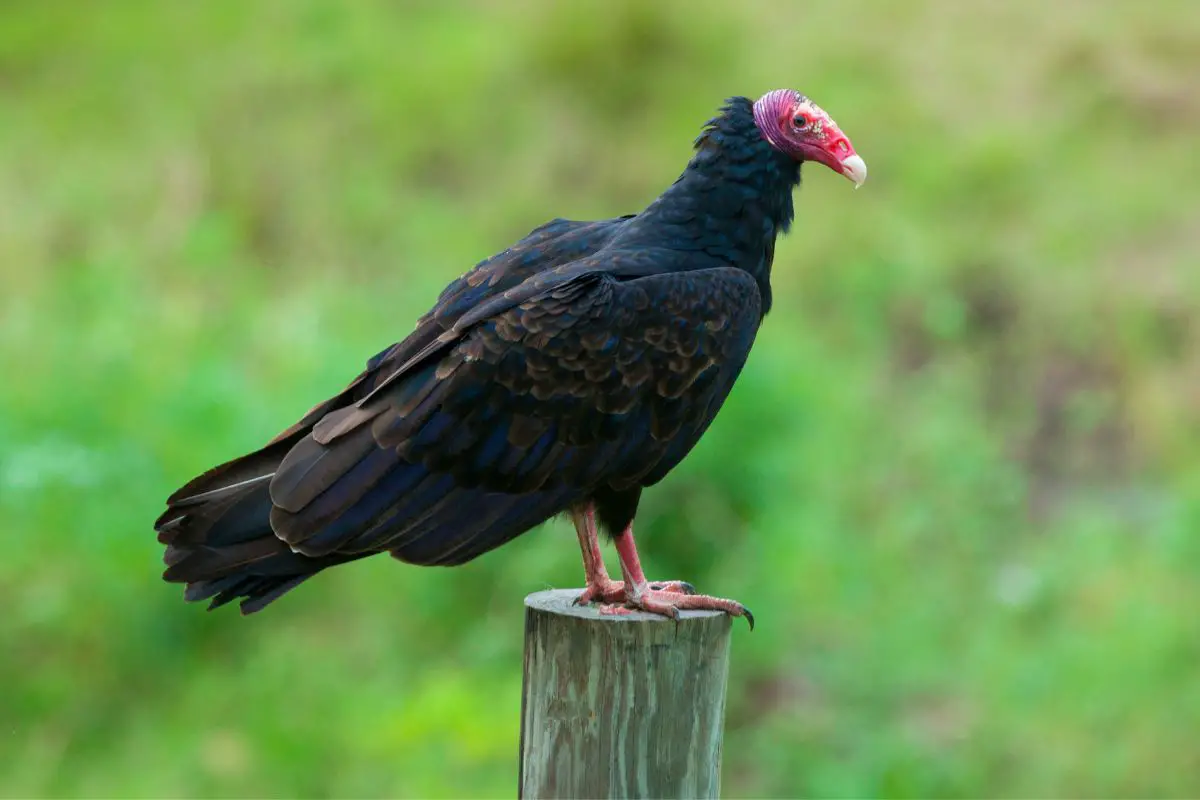
Another extremely large bird is the fascinating turkey vulture. This bird has a wingspan of between 63 and 71 inches and typically weighs between 2.2 and 5.3 pounds. The turkey vulture lives all over North America and prefers deserts, grasslands, and dry regions.
It also thrives in Central and South America, Europe, Asia, and Africa.
The turkey vulture can fly as high as 10,600 feet in the air, making it a formidable bird with an incredible bird’s eye view. These birds have a dark brown body and a bright red head much smaller than most eagles. When they fly, the wings are positioned in an upside-down V-shape, and you may spot them flying above grassy fields or bodies of water.
While turkey vultures are large birds, they are not birds of prey like eagles. Instead, these fascinating birds are scavengers that feed on the carcasses of dead animals. They spot their meals by using a sharp sense of smell that allows them to find food from extremely long distances.
Like the eagle, turkey vultures also have very sharp eyesight, so they can spot even the smallest animal from a distance. Turkey vultures can live up to 16 years in the wild and up to 30 years in captivity. Not bad for a bird!
3. The Western Osprey: An Elusive Wetland Raptor
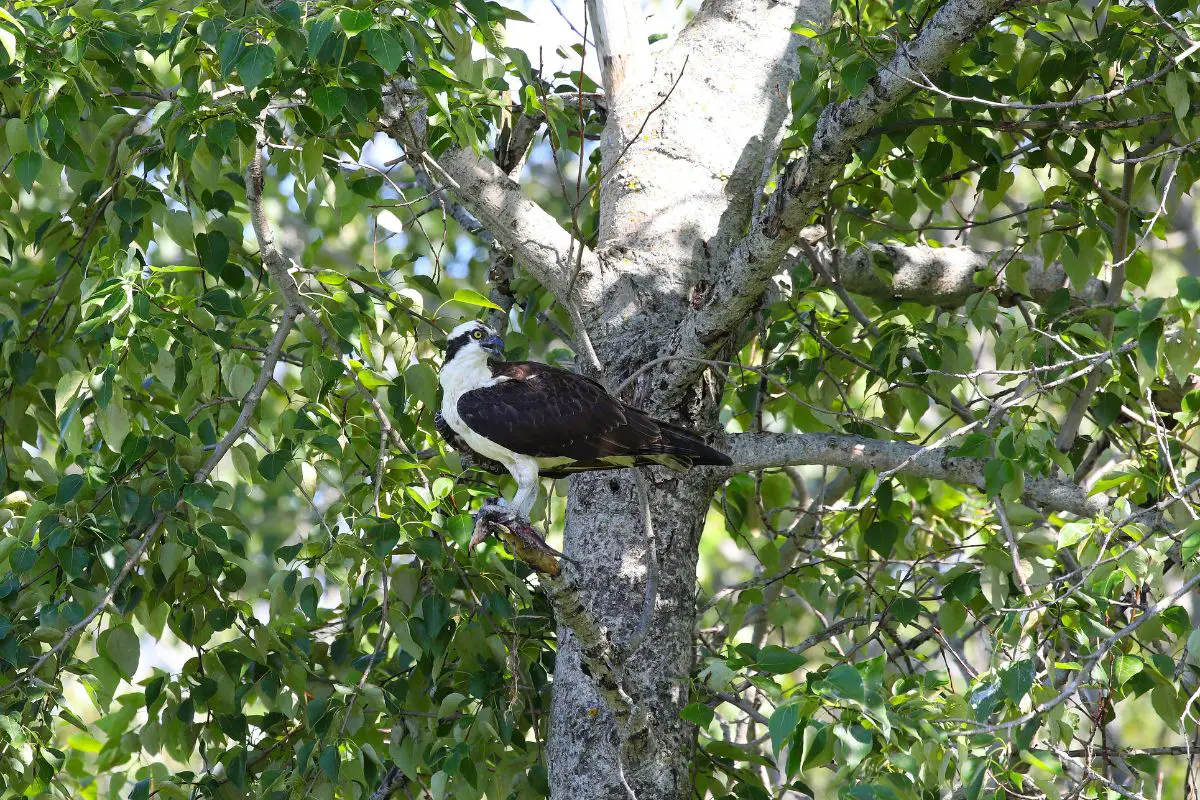
The western osprey is a beautiful bird of prey that prefers to live near the Northern Rockies in North America. This unique bird enjoys hunting for its prey near wetlands, and its diet consists mainly of a variety of fish, crustaceans, snakes, and frogs. The western osprey will also feed on other birds like seagulls or ducks, too.
They can live between 7 to 10 years in the wild but may live longer. This raptor measures between 19.6 and 25.5 inches in length with a weight of between 2.1 and 4.4 pounds, making it a much lighter bird than the average eagle. Its wingspan can reach between 49 and 70 inches, and it’s typically found living along the west coast, ranging from Alaska down to Southern California.
This bird’s range may extend to Canada, depending on climate and food sources. The western osprey has brown-colored feathers on its head, while bald eagles have white feathers. The osprey has dark brown wings and a dark brown tail, while a bald eagle’s wings are much lighter.
The western osprey also has a shorter beak than most eagles, which they use to catch their prey. Eagles’ beaks tend to be longer, so they can tear the flesh of their food before they eat it. Overall, the two birds are similar in that they’re raptors that like to hunt and build their nests high off the ground.
The western osprey migrates south during the winter near water, or in dry deserts until the temperatures up north start to warm up.
4. Prairie Falcon: A Handsome Bird of Prey
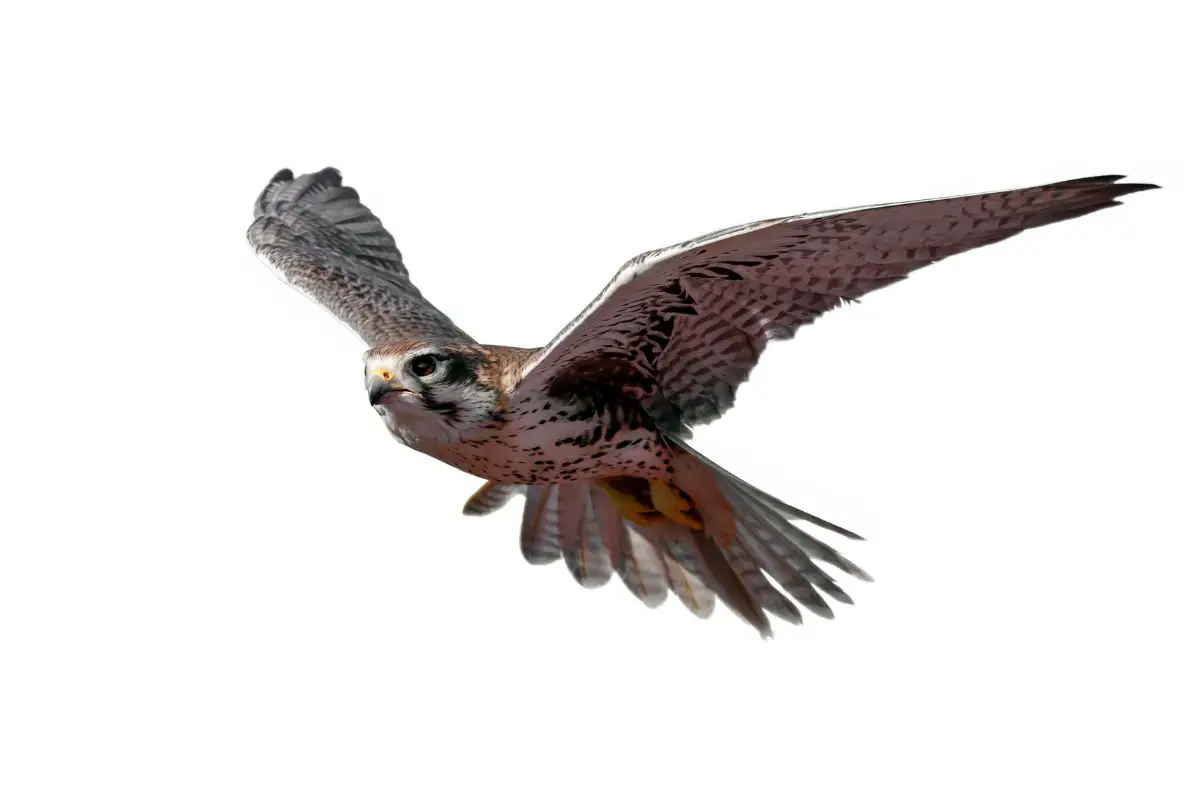
The prairie falcon thrives in the western United States, parts of southern Canada, and northern Mexico. This bird loves to live in open habitats like plains, deserts, prairies, and farmland. This beautiful bird has a white line over its eyes and short, sharp beaks with yellow skin around them.
Their yellow legs and feet are similar to many eagle species. This raptor is often used in falconry to train them, making them a beloved species by bird enthusiasts. The prairie falcon weighs only about 2.4 pounds and measures approximately 15-19 inches long.
These beautiful birds have short, hooked beaks like eagles and a similar flight style. The prairie falcon uses its sharp talons to catch prey, similar to how eagles grab their food. The prairie falcon is much smaller than an eagle and has lighter color.
The beautiful raptor may live up to 20 years in the wild, but most only live to approximately three years old or younger. Many scientists believe that almost 75 percent of prairie falcons don’t live to maturity.
5. Andean Condor: A Mysterious Wild Card
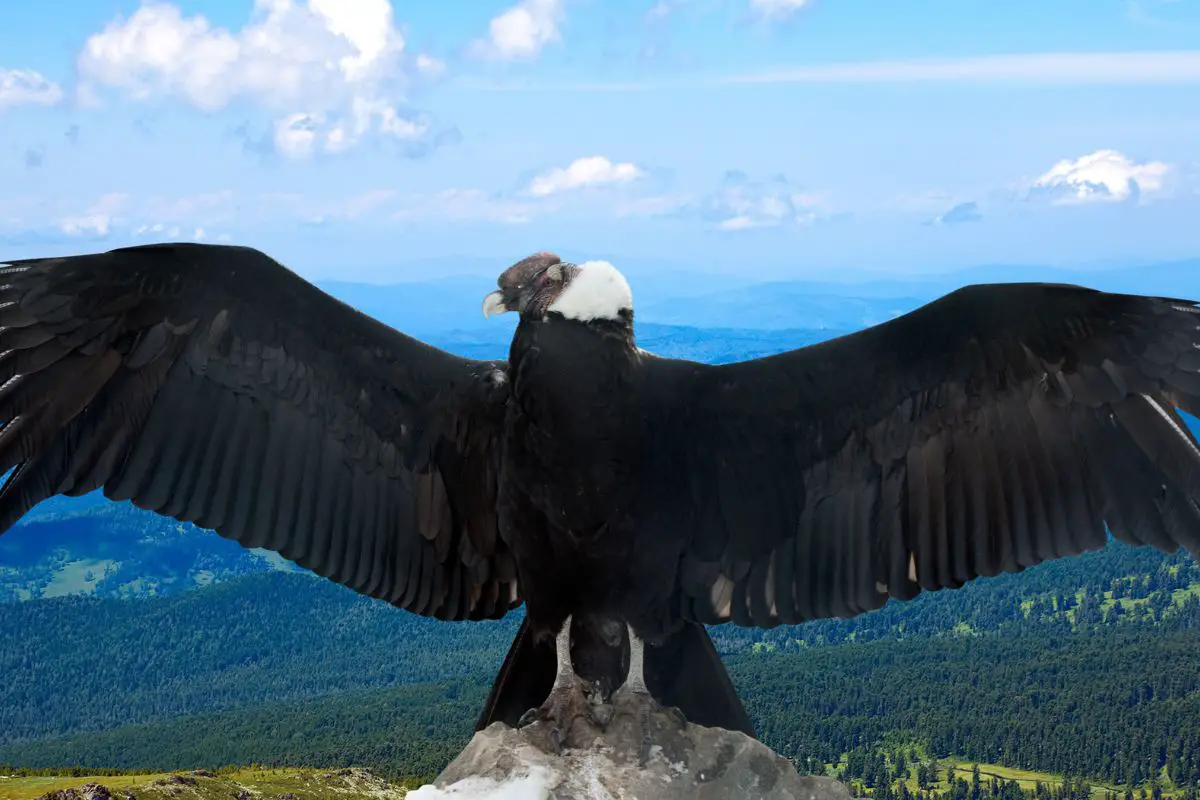
The Andean Condor gets its name from its habitat, which includes the Andes Mountains and parts of the Pacific coast along western South America. These large scavengers like to live in open areas like meadows and enjoy nestling and roosting on cliffs during the winter. This massive bird can weigh between 17 and 33 pounds, with a length of between 3.3 and 4.3 feet and wingspans of 8-10 feet.
The Andean condor has a long lifespan that averages around 50 years. They enjoy eating carrion or dead animals, similar to vultures. Due to their large size, Andean condors are similar to most eagle species.
They also have short, sharp beaks like eagles, although bald eagles’ beaks are larger. This unusual bird has an odd-looking head with a white collar of feathers. It also prefers to eat carrion, while most eagles prefer to catch their prey while it’s still alive.
6. Black Kite: Spoiler Alert: It’s Not an Actual Kite
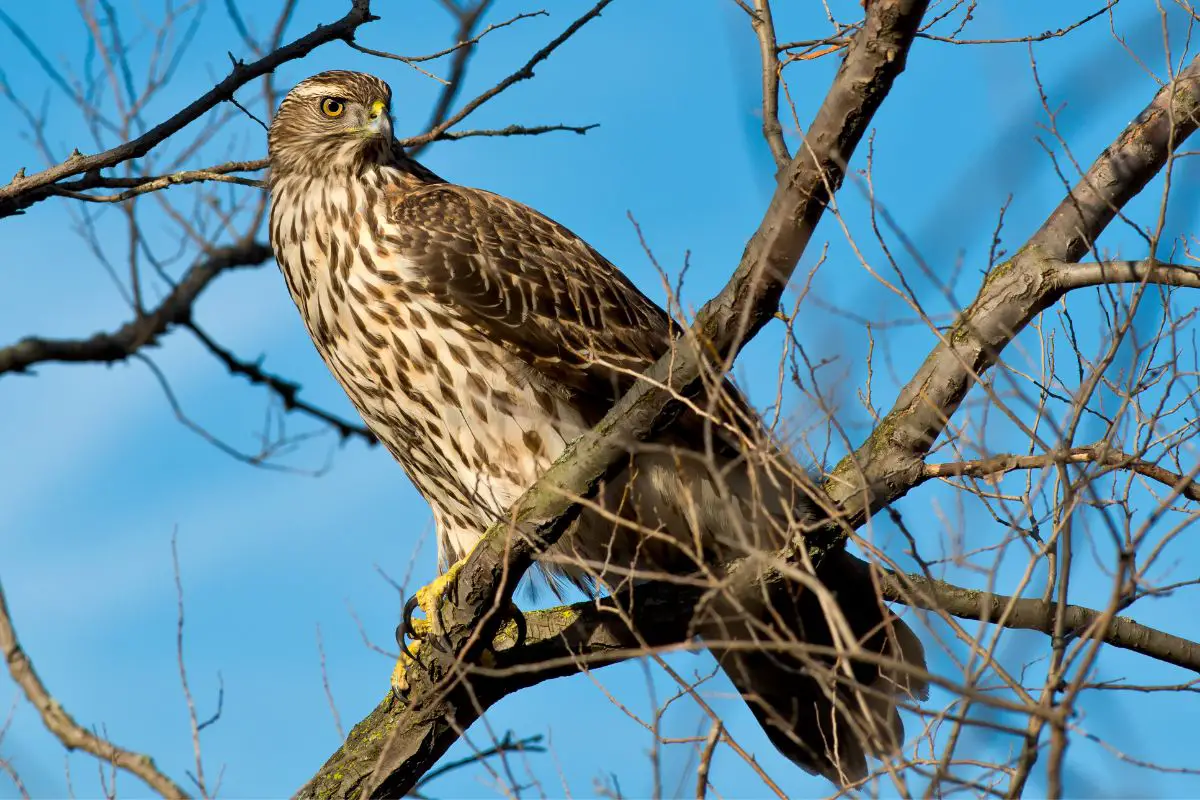
The black kite is a medium-sized bird that loves living in tropical regions of Asia, Africa, Australia, and Europe. Counter to its name, this bird isn’t exactly black, but it looks like a black kite when it’s flying overhead. The black kite eats live prey and carrion, making its diet much more diverse than eagles.
These birds weigh about 3-4 pounds and have a wingspan of between 51 to 60 inches. They live approximately 24 years in the wild and produce between two and three eggs yearly. Back kites have similar legs and claws to most eagles and yellow, short legs.
Their feathers are tighter and smoother than bald eagle feathers, which have a much shaggier appearance. And, most eagles prefer to kill and eat live prey, while the back kite can easily eat carrion as often as they do live prey. They also have a dark patch behind their eyes which is not common in most eagle species.
7. Northern Goshawk: A Gorgeous Gray Bird

The northern goshawk lives in the western and northeastern areas of the USA, in Alaska, and western Canada and Europe. They prefer living in mountain ranges and wild forests where they can grab their prey, which includes squirrels, rabbits, and songbirds. This stocky bird has a distinctive barrel chest and a grey belly.
They typically weigh only three pounds in adulthood and have an average wingspan of 40 to 47 inches. The bird lives up to six years in the wild, although some may live longer. Northern goshawks are similar to eagles because they enjoy a diverse prey diet.
However, they won’t eat fish as many eagle species do. Both birds have bright yellow legs and sharp claws, but the northern goshawk is much lighter and smaller. They also have unique white eyebrows and orange or red-colored eyes that you won’t see in eagles.
8. Black Vultures: Super-Sized Raptors
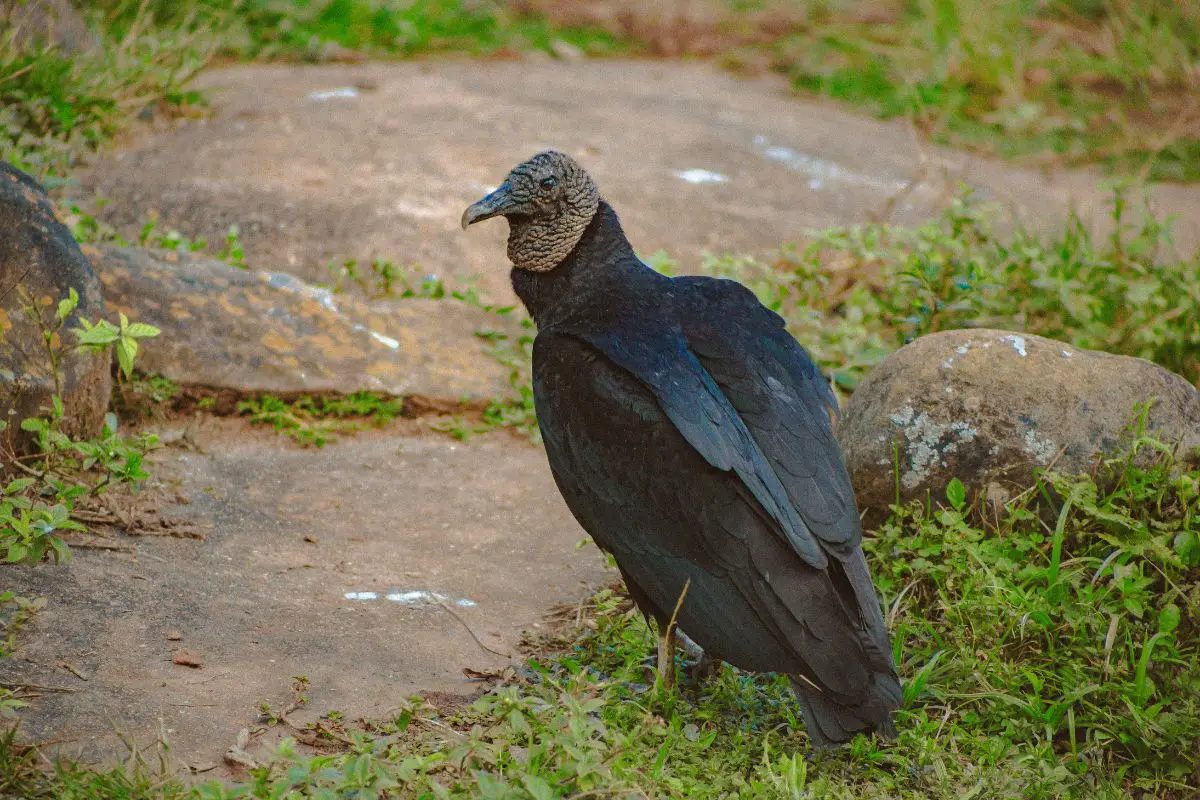
This ultra-large raptor lives from the northeastern U.S. to regions of South America. They like to stick to open areas but prefer to nest and roost in woodlands and forests. The black vulture has a wingspan between 4.5-5.5 feet and weighs approximately 2.6-4.3 pounds in adulthood.
Their average lifespan is 10 years in the wild. These unique birds are all black with subtle hints of silver under their wings. They enjoy eating the fresh carcass of large mammals but will also eat decaying meat.
The black vulture has an un-feathered head and neck, while eagles’ heads are completely covered in feathers. Their tails are short and rounded, similar to the shape of bald eagle tails. Black plumage makes the black vulture quite different from the eagle and its preferred diet of dead, rotting flesh.
9. Northern Harrier: A Lovely Bird of Prey
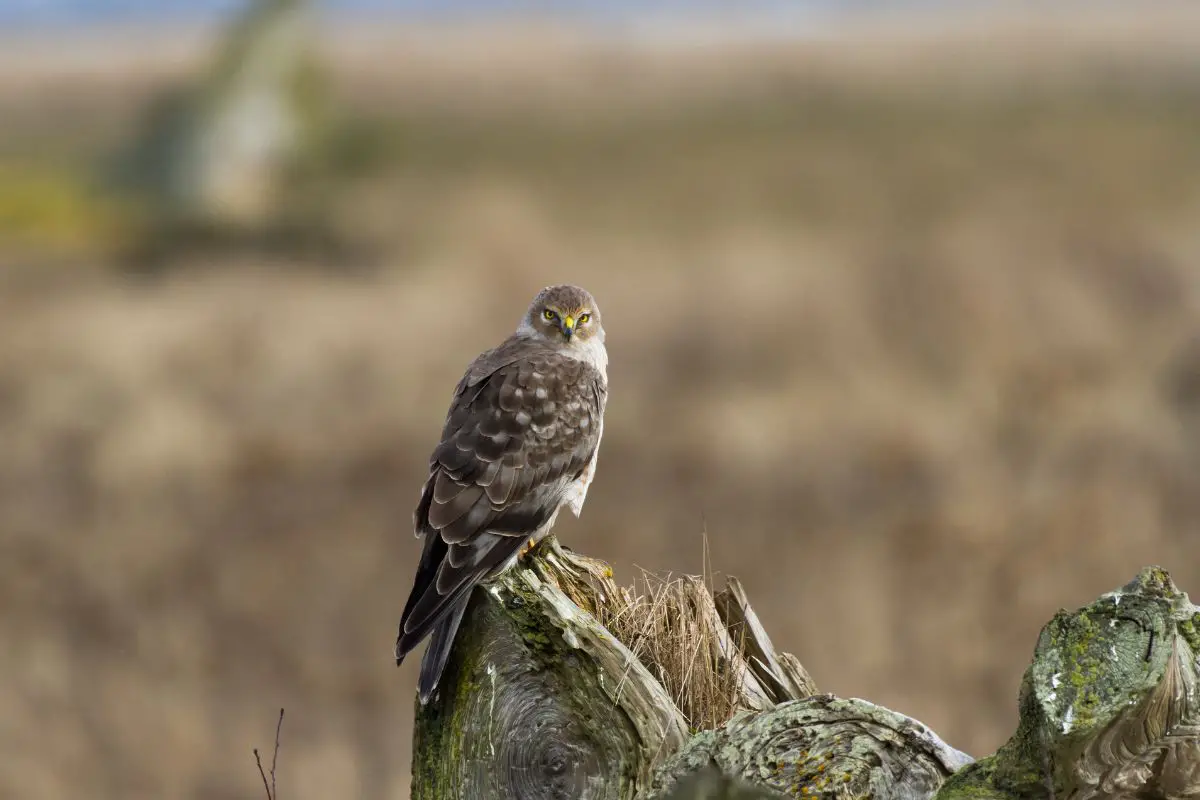
Northern harriers live in the USA’s northern region and the northern part of Canada, but they breed in the southern part of the US and Mexico. This bird likes to live and hunt in open spaces like grasslands, prairies, marshes, and fields. This raptor has a wingspan of 40-46.5 inches and weighs approximately 10.6-26.5 ounces.
The beautiful gray plumage has earned the nickname “the gray ghost.” Northern harriers live around 16 years old. They eat small ducks, doves, frogs, lizards, and insects. Northern harriers have sharp beaks, short legs, and a flight style similar to eagles.
Like most eagle species, they use their sharp claws to catch prey. These unique and beautiful raptors have a more diverse diet that includes insects, while most eagles won’t bother eating bugs.
10. Common Buzzard: An Uncommon Bird
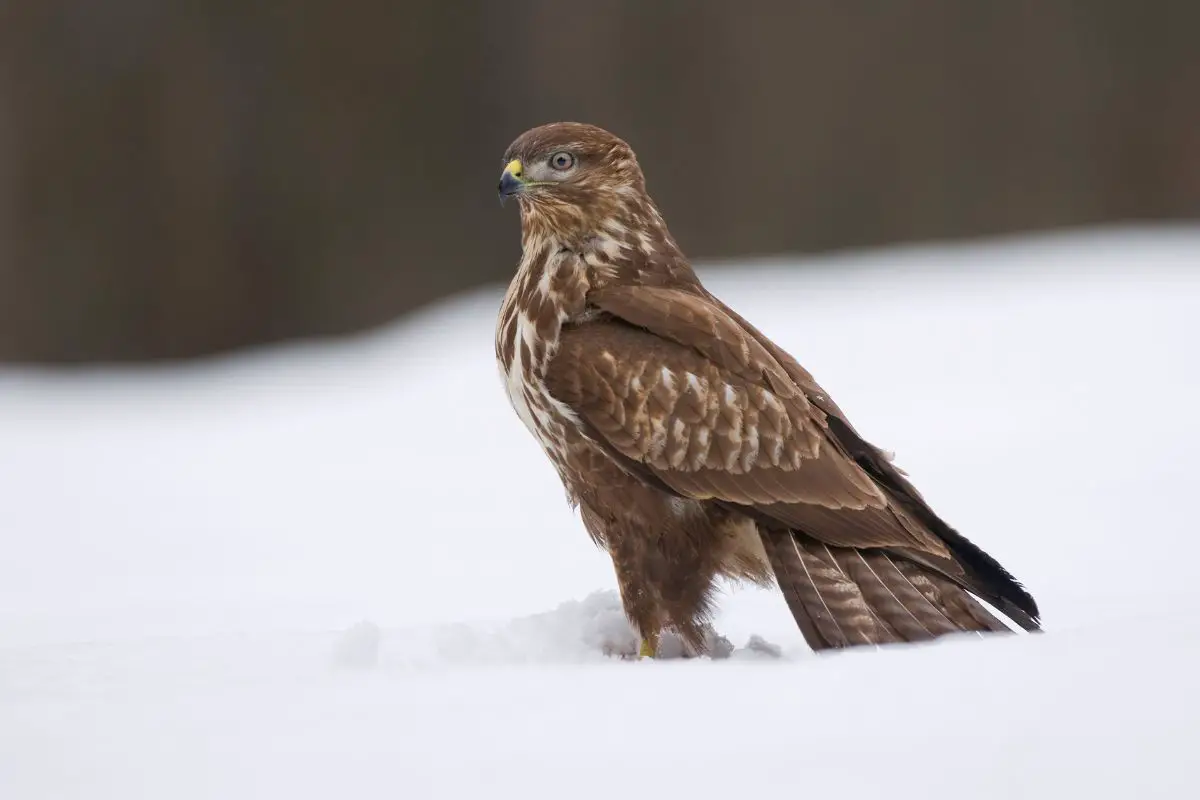
The common buzzard is found throughout Asia and Europe but migrates to Africa during the winter. The bird got its name because it’s the most common bird of prey found in the UK. It measures between 16-23 inches in length as an adult and weighs between 0.94 and 3 pounds.
The common buzzard likes to feed on small mammals, birds, and carrion. Its lifespan ranges from 12 to 20 years and may be found eating insects and large worms in addition to “meat.” Due to its brown feathers and large size, the common buzzard can easily be mistaken for an eagle.
This bird is not just a fan of prey, but it also eats carrion, which makes it both a bird of prey and a scavenger bird, unlike the famous eagle that only eats the food it hunts and kills.
11. Cooper’s Hawk: An Extremely Agile Raptor
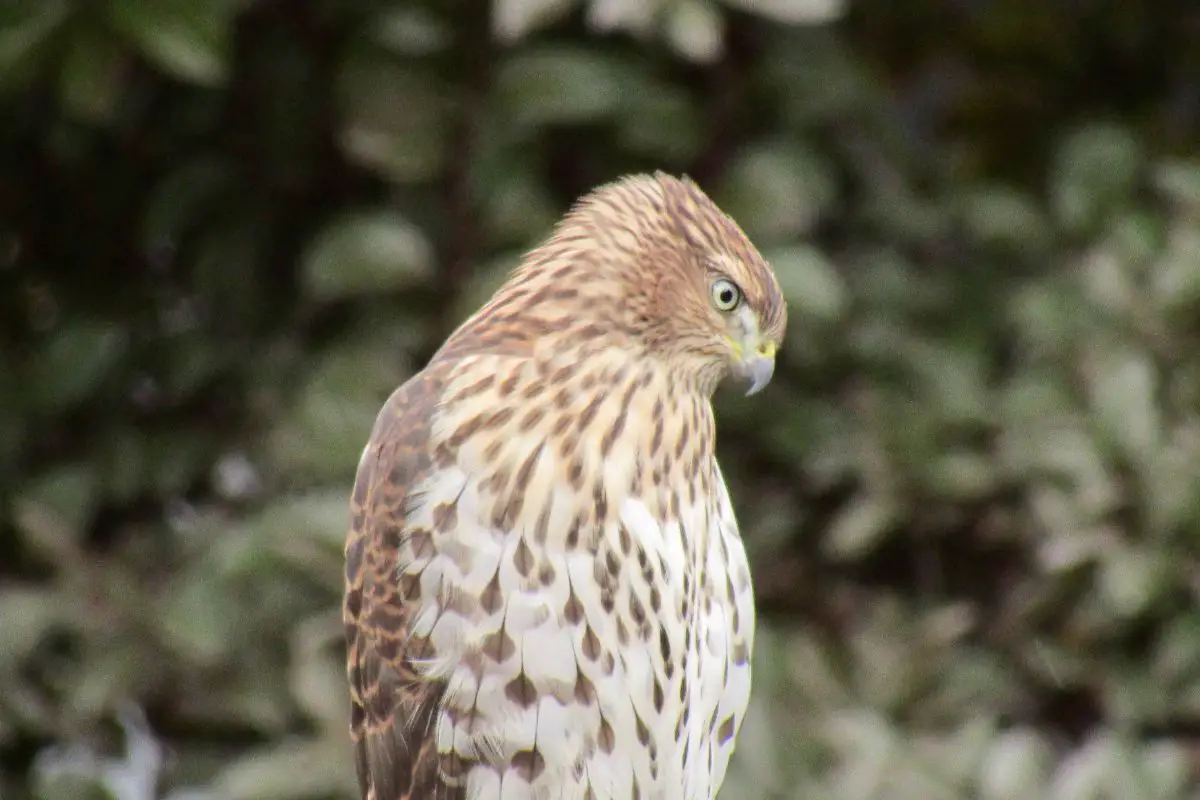
The Cooper’s hawk lives in almost every area of the United States and in the southern region of Canada. Known for its amazing agility, this raptor is a beloved bird that has a wingspan between 24-35.5 inches. The Cooper’s hawk weighs up to 24 ounces when full-grown.
It feeds on doves, grackles (birds), pigeons, and squirrels. Its beautiful patterned feathers give it a distinctive appearance, and it can live to 8-12 years old in the wild. While these hawks are fairly large, most eagles tend to have a larger wingspan.
Eagles also eat larger prey, while Cooper’s hawk sticks to smaller birds and mammals. Both birds are extremely strong, but eagles have slightly larger and more muscular legs. Eagles and hawks both eat fish, depending on where they live and nest.
12. Red-Shouldered Hawks: Red-Colored North American Birds
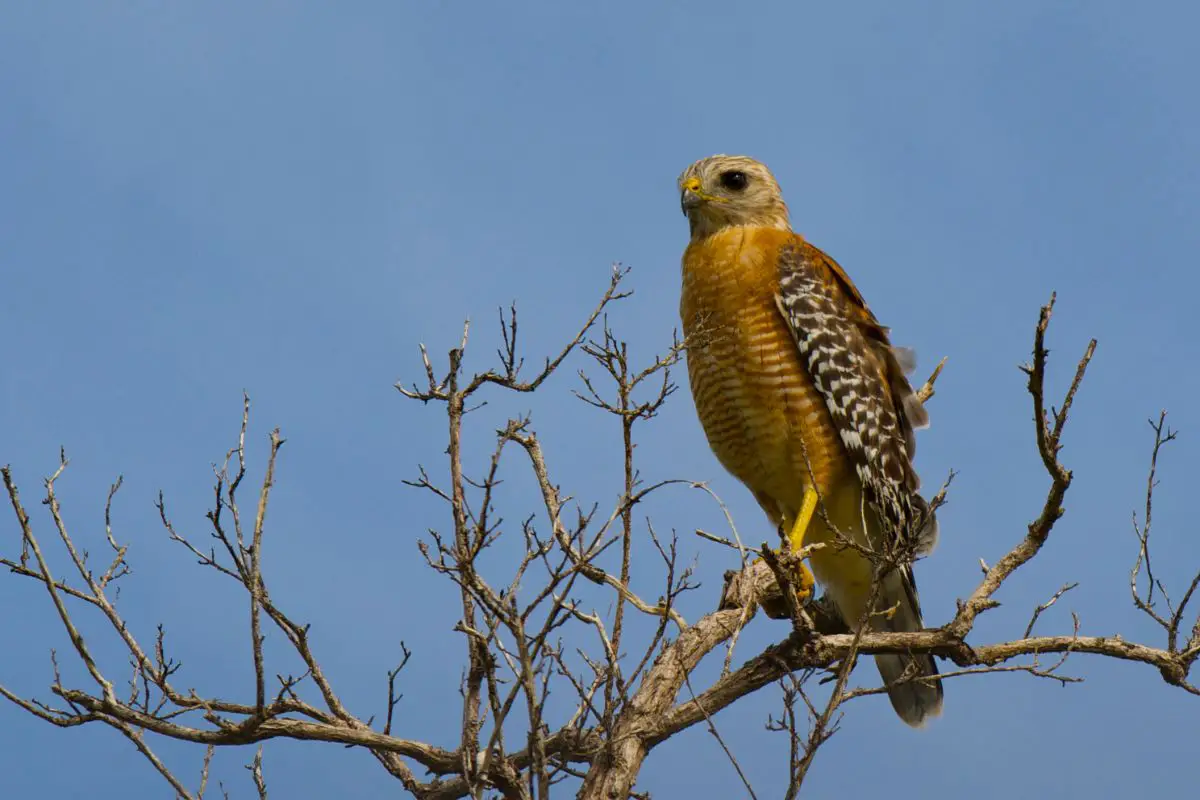
Due to its red-colored shoulder patches, the red-shouldered hawk is easy to identify. This raptor lives in the eastern part of North America but may be found as far south as Florida and parts of Mexico. The bird likes to nest in tall trees and eats reptiles, amphibians, and small rodents.
Adults weigh up to 1.3 pounds and have an average length of between 17-24 inches. The red-shouldered hawk lives between 15 to 19 years old in the wild, but some have been found to be as old as 26 years. This beautiful bird has a similar shape to an eagle, but it’s much smaller with a smaller wingspan.
Both birds enjoy eating live prey, but eagles tend to eat much larger animals, like rabbits and mammals. Most eagles don’t have red feathers, but the red-shouldered hawk is famous for its reddish-hued feathers.
13. Swainson’s Hawk: A Traveling Raptor
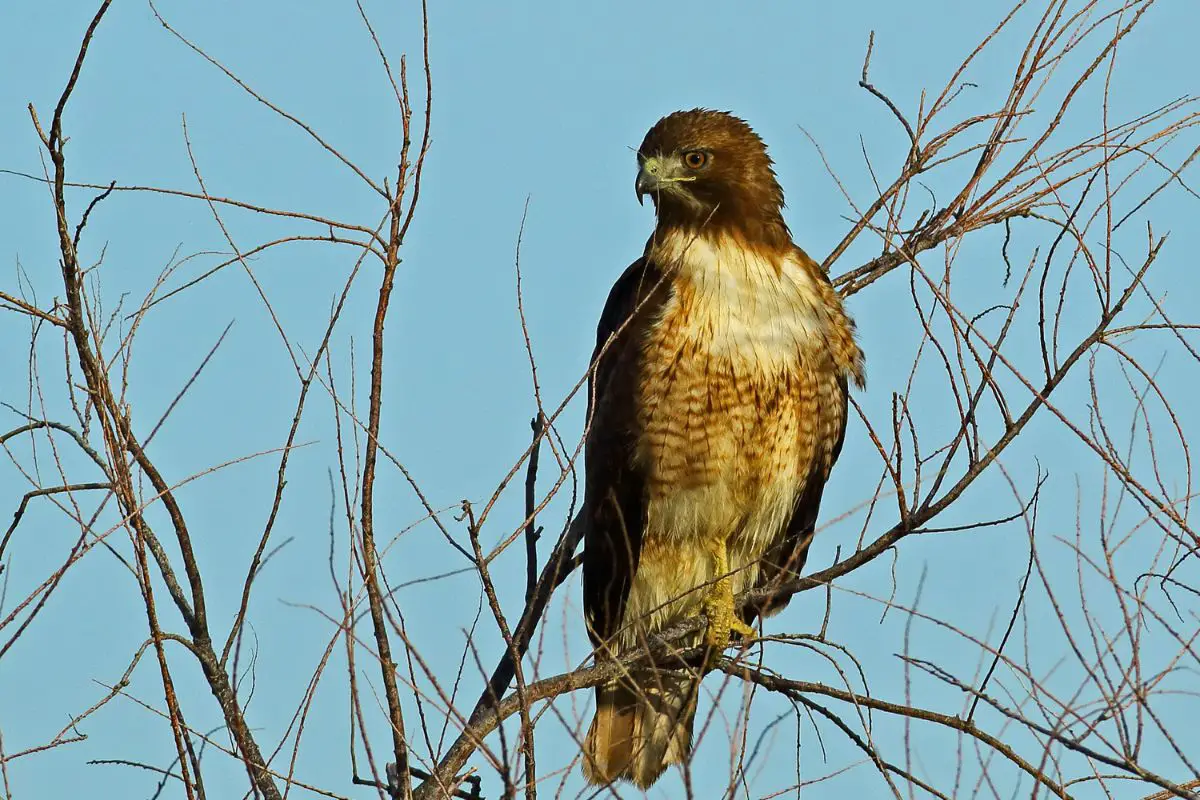
Another hawk similar to eagles is the Swainson’s hawk which lives in the western United States but migrates as far as Argentina during the winter – a distance of over 6,000 miles. This large hawk has an amazing 49-inch wingspan and weighs between 1.5-3 pounds. It can live between 16-19 years in the wild and has a diet consisting of small mammals and reptiles in the summer, including gophers, mice, snakes, and lizards.
It prefers to eat large insects during the rest of the year. The Swainson’s hawk has dark brown feathers that resemble a bald eagle and other eagle species. But this bird of prey eats a lot more insects than eagles, and its diet mostly depends on the season.
This amazing hawk also migrates much further distances than eagles do.
14. Great Horned Owl: One Wise Predator
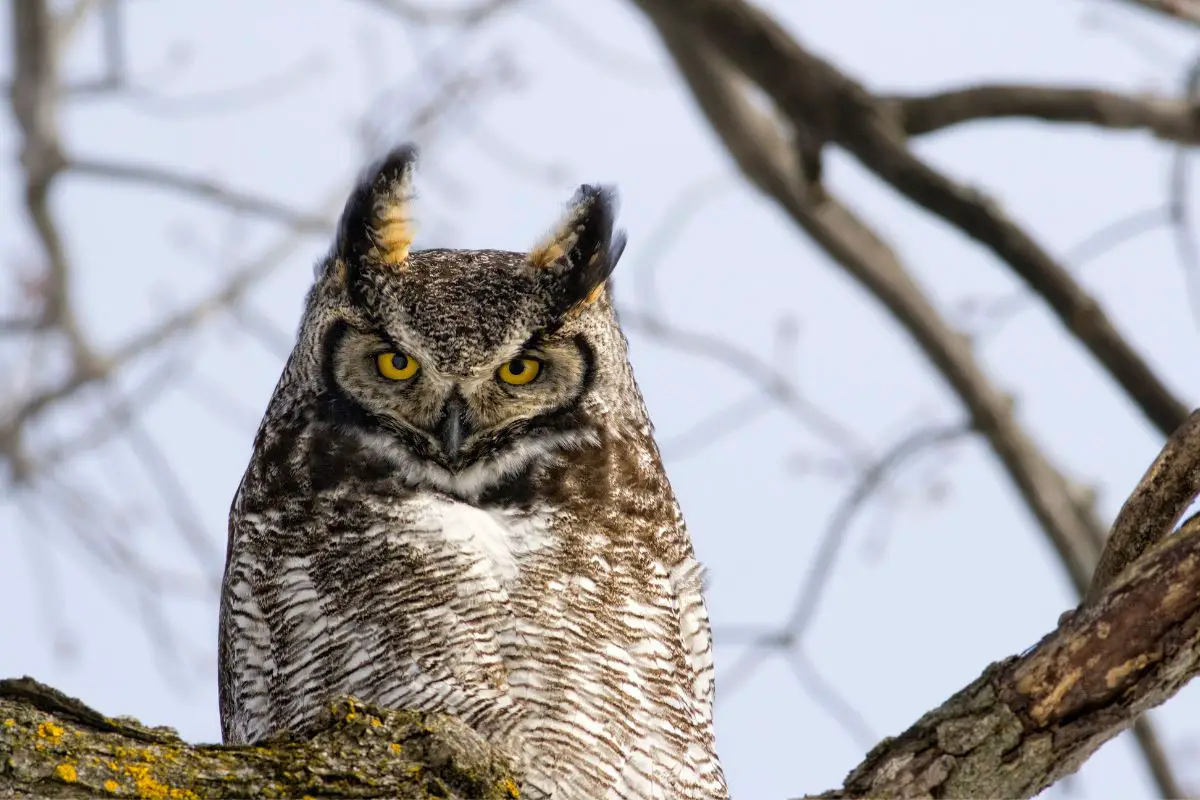
This unique bird is well-known for its hooting call and is native to the Americas. The great horned owl weighs about three pounds and has a wingspan of approximately 4.6 feet. This round and fluffy brown-colored owl can live to be 20-30 years old and even longer in captivity.
It hunts mostly at night and feeds on mice, rabbits, skunks, and squirrels. It will also eat scorpions, lizards, and snakes. Eagles hunt during the day, while the great horned owl hunts at night.
This bird is completely nocturnal, making it quite different from eagles. It’s also much rounder in shape yet a whole lot lighter than every eagle species. Both are birds of prey, but that’s where the similarities end.
15. Bearded Vulture: Quite a Handsome Fellow
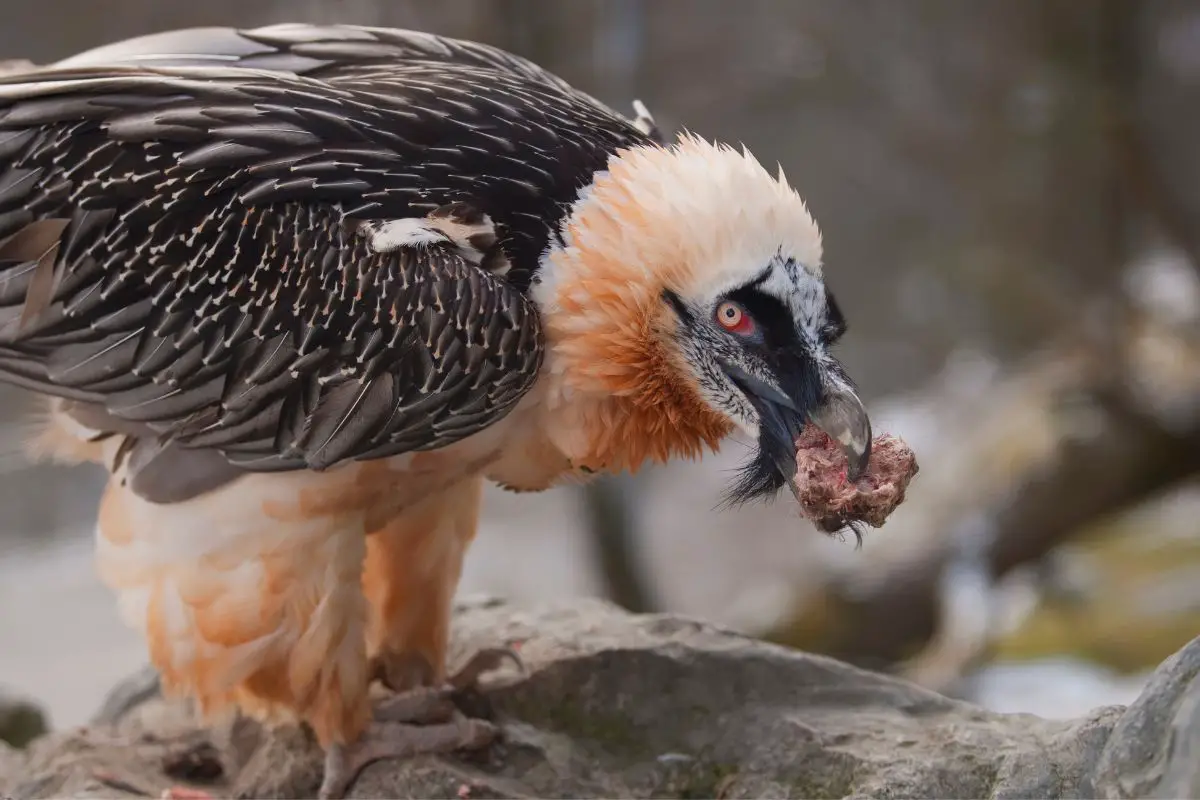
Bearded vultures live throughout southern Europe, Asia, and parts of Africa on rocky cliffs. These unique birds of prey scavenge for bones, which makes them one of the most unique of all raptor species. These extremely large birds have a wingspan of 7-9 feet or more and weigh up to 13 pounds.
They can live to be over 20 years old in the wild and up to 40 years in captivity. Their beautiful ruddy feathers and “bearded” feathers around the head give them a unique look.
One thing that makes these birds unique is that their diet consists mostly of bones. Almost every other bird of prey will eat meat and regurgitate the bones, including eagles. Bearded vultures are massive and actually larger than many eagle species, too.
How much do bald eagles weigh?
Female bald eagles weigh around 10-14 pounds and male bald eagles weigh around 25% less than females.
How do eagles catch fish?
Eagles don’t dive into the water to catch fish. Instead, they skim across the surface to catch fish with their beaks. If a fish is too heavy to lift, the eagle may grasp it with its talons and use its wings to “swim” back to the shore.
What size are eagles’ nests?
Most eagle nests are between 4-5 feet in diameter and can be up to 2-4 feet deep. Eagles will return to the same nest each year and add another foot of material each time. The biggest bald eagle nest ever discovered was 9 feet across and 21 feet deep!
Sources:



